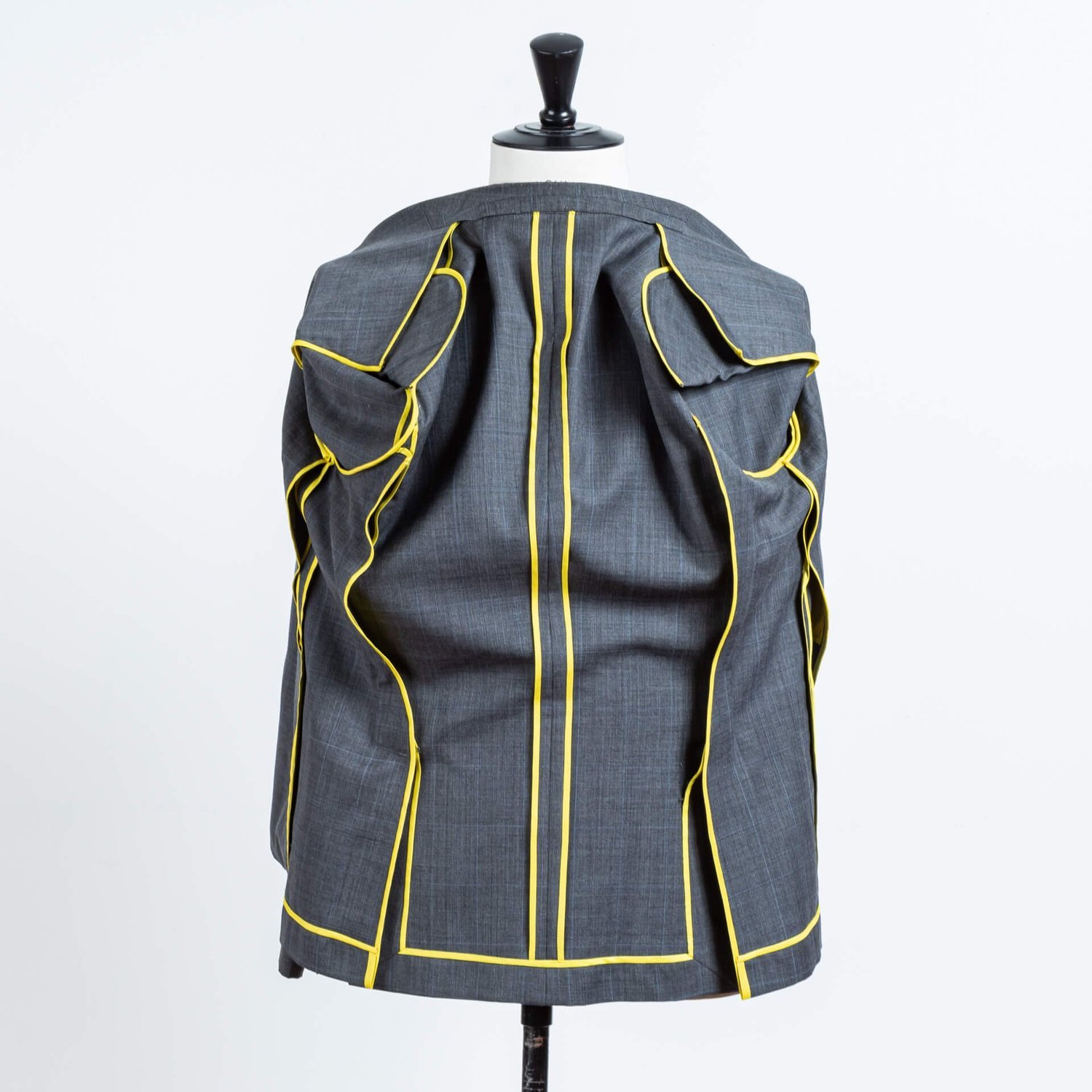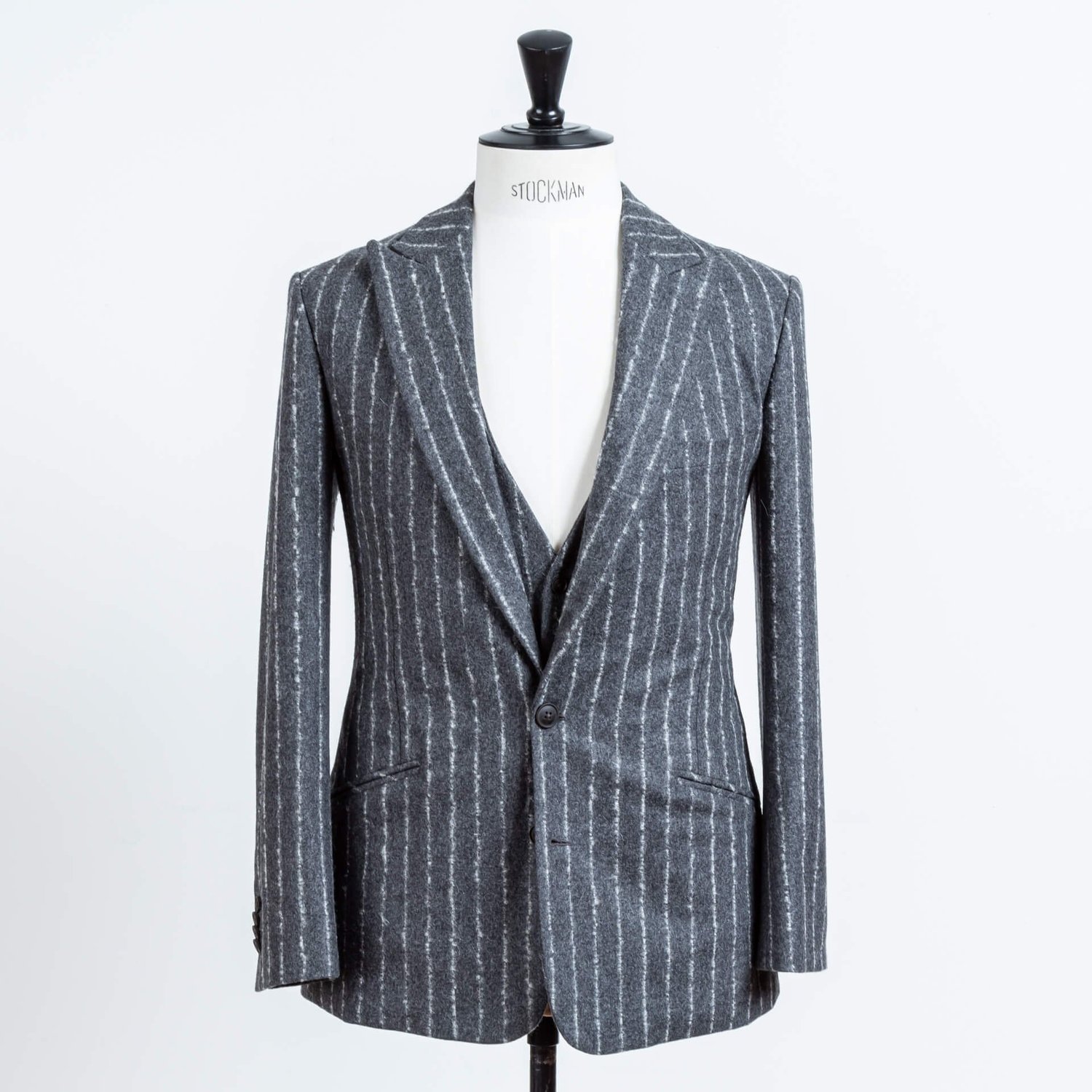Lees dit artikel in het Nederlands
What is an unlined blazer or jacket?
An unlined blazer has no lining on the inside of the jacket and/or sleeves. There are various ways to assemble and finish a blazer. Here, we specifically refer to the inner workings, and in the case of unlined jackets, the absence of an inner lining, eliminating the need for covering.
What does an unlined blazer look like?
In this video, I'll show you how an unlined blazer/jacket can look and explain what makes it special.
Why would I choose an unlined blazer?
Unlined blazers and jackets are very popular because they are light and flexible, making them comfortable to wear. This aligns well with the current clothing style, which, for many people, has become business or smart casual. Another important factor is that unlined jackets are less warm because there is no air trapped by the lining.
Variations of unlined blazers?
You can be quite creative in various ways with unlined jackets.
1. Completely unlined: The lining is completely absent, even in the sleeves. This results in an extremely lightweight blazer that can be comfortably worn even in tropical heat, provided a breathable fabric is used. We create such jackets, for example, for customers getting married in Curaçao, as well as for customers in places like Japan and Africa, where it can be hot and humid. If you use a fabric with good body and weight, one that already has structure and shape, it can also be excellent for colder regions. Some more experienced bespoke suit wearers even choose to have their formal blazers made this way, creating an ideal fusion of appearance and comfort. These are the solutions we enjoy thinking about and providing.
Three Roll Two Jacket: Unlined & Neapolitan Inspired.
This fully unlined Three Roll Two (3 roll 2) jacket is crafted according to the ancient Neapolitan tradition, where craftsmanship and refinement come together.
The jacket is made of lightweight wool, providing comfort and breathability even on warmer days. The absence of lining ensures unparalleled flexibility and freedom of movement, making jackets crafted in this manner a definite favorite for those who appreciate both comfort and style.
The model is a 3 roll 2, meaning that the top button is 'hidden,' giving the jacket a natural, relaxed appearance. The Neapolitan shoulder with pleats (spalla camicia) adds a touch of casual elegance, while the patch pockets provide a distinctive and informal touch.
2. Sleeve lining: If you're working with a fabric that is less smooth, it's advisable to line the sleeves so that you can easily put on the blazer. This creates another combination of needs and techniques, resulting in a unique style.
Unlined Suit: Woollen Spun Boucle Chalkstripe
This bespoke 3-piece unlined suit, featuring a bouclé chalk stripe in woollen spun/carded wool with a flannel finish, stands as my personal favorite tailored suit crafted in the past decade.
A highly distinctive handmade tailored suit that amalgamates various construction techniques to create a robust yet smoothly wearable ensemble.
"Not just a supercar but a hypercar."
Bespoke Tailoring: A Paradox of Warmth and Light Wearability
This tailored suit is not merely an ensemble; it is an expression of my personality, style, and vision, brought to life through classical craftsmanship with a modern approach.
This unlined tailored suit with chalk stripe in carded wool is my favorite tailored suit of the past years. A very special handmade suit where various construction techniques are combined to create a powerful yet flexible-wearing suit. Inspired by Kenichi Shinoda of the Yakuza clan Yamaguchi-gumi.
The fabric is from the Chequers collection by Holland & Sherry (737306), weighing 340 grams, making it the ideal weight for making and wearing a suit. It's a Woollen Spun super 100's wool in Mid Gray with a Chalk Boucle Stripe of 3/4 inch. In other words, a carded wool. This means that the fibers are short before spinning, creating a fabric that looks voluminous with its own character. The fabric remains supple and durable.
The jacket has no lining on the inside, making it even lighter and suitable for summer days. However, the lining is used in the sleeves to make it easy to put on and on the seams to finish them. Essentially made like a suit in Florence or Naples. The tailor made jacket has 2 buttons placed low, peak lapels, slanted pockets, and a handcrafted buttonhole with a floating canvas in the lapels to give it some structure. The buttons are made of brown horn for an extra accent.
The tailor made trousers are made with a fishtail, button closure, side pockets, and 2 back pockets with a button. The lining on the inside is made of a monk's cloth of cotton as an extra personal accent.
The tailor made waistcoat has a fabric back.
3. Lining on the shoulder blades: Unlined jackets are often worn when it's warm, and perspiration can come into contact with the fabric, which is not ideal. To prevent this, lining can be added to the area where one sweats, often the shoulder blades and neck. Various designs can be created, such as crossing the lining, creating a certain shape with a curve, and finishing it in ways x, y, and z. This doesn't necessarily make the jacket better, but it does make it more personal.
What fabric do you use for an unlined blazer?
Due to the absence of lining, there is more contact with the fabric, which is an important factor in terms of comfort and durability. Many people opt for a fabric that feels comfortable on the skin, such as cotton, linen, cashmere, Vicuña, and essentially any soft fibers. The point of attention is that friction will occur between the body and the fabric; normally, the lining prevents this. So, the softer the fabric, the sooner it will wear out. In general, it can be stated that unlined blazers are less durable than full canvas blazers. There are, of course, exceptions. If you work with fine Mohair or a High Twist yarn in the fabric, the effect will be less, but these fabrics feel more crisp. So, there are many factors to consider before making a choice.
Colours/Patterns
You determine this yourself, but here are some useful pointers. If it's a blazer that you want to be able to wear on various occasions, go for a neutral colour and pattern. This also applies when aiming for a formal look. If you're going for an expressive style or a business casual look, you can opt for more eye-catching colours and patterns. Ensure that there is always a clearly visible difference between both colours and patterns when combining, so each garment stands out. Otherwise, 'the eye of the beholder' won't know where to look.











